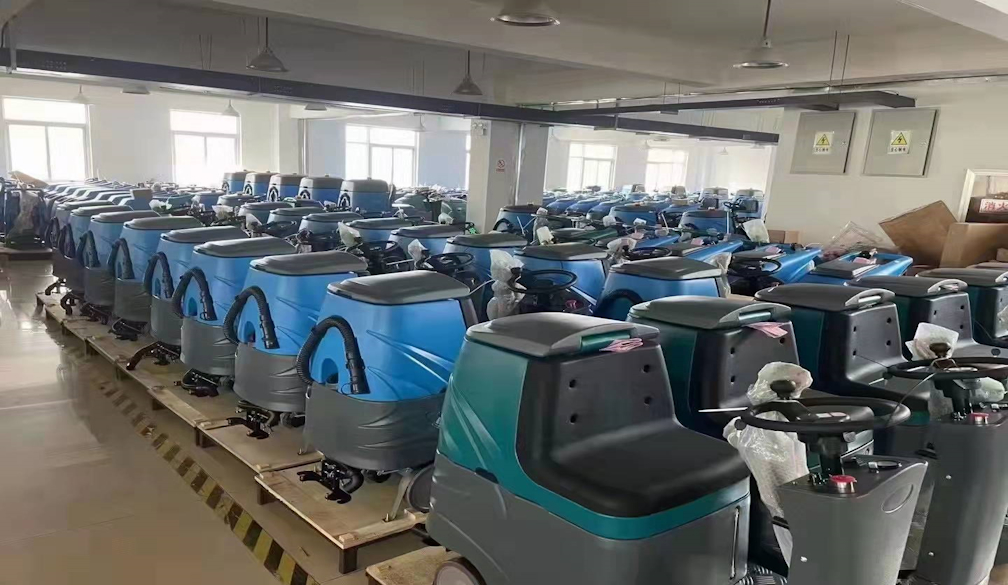Ride-On Sweeper Safety Training: Ensuring Operator Competence

Ride-on sweepers are crucial devices for keeping up with spotless and safe conditions in different enterprises, like distribution centers, fabricating offices, parking garages, and business spaces. These machines are profoundly productive, yet they can present critical dangers to the two administrators and onlookers in the event that not work accurately. To guarantee the protected and proficient utilization of ride-on sweepers, complete well-being preparation is critical. This article investigates the significance of ride-on sweeper security preparation and frames key components that ought to be incorporated to guarantee administrator skill and diminish the gamble of mishaps.
The Importance of Ride-On Sweeper Safety Training
Preventing Accidents
Accidents and injuries can be avoided if complete ride-on sweeper safety training is received, which is one of the key reasons for receiving such training. Ride-on sweepers are strong equipment that, if used carelessly, have the potential to inflict significant bodily injury. Accidents can be considerably cut down or perhaps prevented entirely by the proper training of operators on correct usage, safety regulations, and potential dangers.
Protecting Operators
Operators of ride-on sweepers are exposed to various risks, including collisions, falls, and exposure to harmful chemicals or dust. Proper training equips operators with the knowledge and skills needed to protect themselves while operating the equipment. This includes understanding how to use personal protective equipment (PPE), emergency procedures, and safe operational practices.
Minimizing Property Damage
In addition to the risk to human safety, improperly operated ride-on sweepers can cause significant damage to property. Collisions with walls, equipment, or other objects can result in costly repairs and downtime. Training ensures that operators understand how to navigate through tight spaces, avoid obstacles, and minimize the potential for property damage.
Key Elements of Ride-On Sweeper Safety Training
Classroom Instruction
The foundation of ride-on sweeper safety training often begins in the classroom. In this phase, operators are introduced to the theoretical aspects of sweeper operation and safety.
Equipment Familiarization
Operators should become familiar with the specific ride-on sweeper they will be using. This includes understanding the machine's controls, functions, and maintenance requirements.
Hazard Identification
Operators should learn to identify potential hazards in their work environment, such as uneven surfaces, slippery areas, and obstacles.
Personal Protective Equipment (PPE)
Proper use of PPE is essential to protect operators from potential hazards. This includes safety glasses, hearing protection, and appropriate footwear. Training should cover when and how to use each type of PPE effectively.
Practical Training
Hands-on training is a critical component of ride-on sweeper safety. During this phase, operators gain practical experience operating the equipment under the guidance of a qualified trainer. Practical training should cover:
Starting and Stopping
Operators learn how to safely start and shut down the sweeper, including proper warm-up and cool-down procedures. This practical aspect reinforces what they have learned in the classroom.
Maneuvering Techniques
Operators practice navigating the sweeper through various scenarios, including tight spaces, corners, and congested areas. They should become adept at steering, reversing, and making precise turns.
Sweeping Patterns
Understanding effective sweeping patterns helps operators cover larger areas efficiently and ensures no spots are missed. This training should emphasize the importance of systematic and thorough sweeping techniques.
Obstacle Avoidance
Operators learn how to identify and navigate around obstacles such as debris, pallets, or parked vehicles. Practical training in obstacle avoidance is crucial for accident prevention.
Hazardous Materials Handling
In some industrial settings, ride-on sweepers may encounter hazardous materials, including chemicals, oils, or flammable substances. Operators must be trained in proper handling procedures, which should include:
Spill Response
It is important for operators to be familiar with how to respond to situations involving spills, leaks, or dangerous materials. This includes making the proper notifications to the right authorities, as well as utilizing the appropriate absorbents and containment measures.
Chemical Awareness
During training, participants should be instructed on how to recognize and safely handle potentially dangerous substances that may be found during cleaning activities. Chemical labels, safety data sheets (SDS), and proper storage methods are all things that operators should be familiar with.
Routine Maintenance
Not only is a ride-on sweeper that is regularly maintained safer, but it also functions more effectively. Training on normal maintenance responsibilities, such as the following, should be provided to operators
Daily Inspections
Before each shift, operators need to be trained on how to do pre-shift inspections to identify any flaws or possible problems that may arise with the machinery. This involves inspecting the sweeping components for damage and checking for any loose bolts or hydraulic leaks.
Basic Troubleshooting
Operators should be able to resolve small difficulties and be able to troubleshoot common problems that may occur while the operation is being performed. This may eliminate the need for costly downtime as well as lengthy repairs.
Cleaning and Storage
The training should include the correct practices for cleaning and storing the equipment. The operators of the sweeper should be instructed on how to properly clean and store the machine so that it does not become damaged or corroded.
Continuous Education and Evaluation
Training in safety should not be viewed as a one-time event but rather as a continuous practice instead. Refresher training should be given to operators on a regular basis so that they can maintain and improve their knowledge and abilities. In addition, evaluations and assessments have to be carried out on a consistent basis in order to guarantee that operators are sticking to safety regulations and retaining their level of competence.
Conclusion
Ride-on sweepers are invaluable tools for maintaining clean and safe environments in various industries. However, they can be hazardous if not operated with competence and caution. Ride-on sweeper safety training is essential to prevent accidents, protect operators, and minimize property damage. Training should encompass classroom instruction, practical training, hazardous materials handling, routine maintenance, and continuous education. By investing in comprehensive safety training, organizations can ensure that their ride-on sweeper operators are competent and capable of safely and efficiently performing their tasks, ultimately promoting a safer and more productive work environment.

